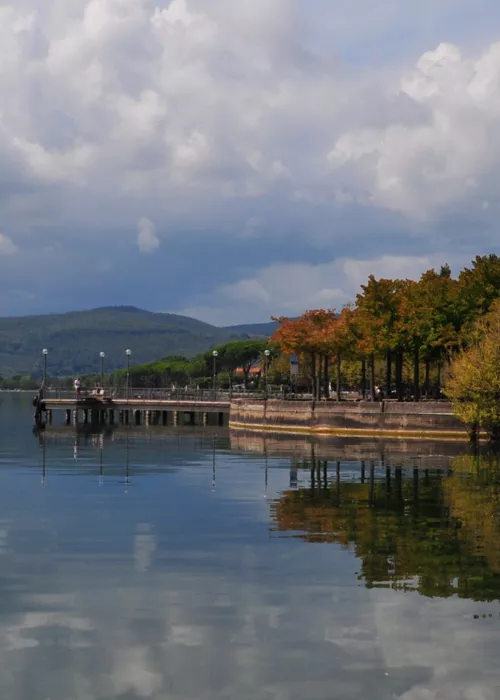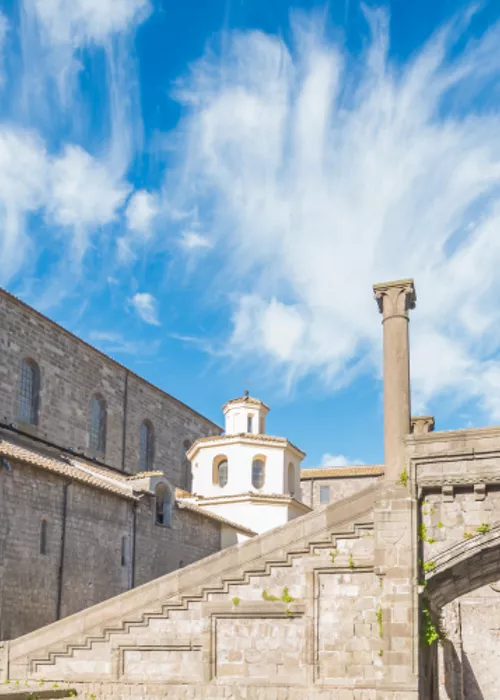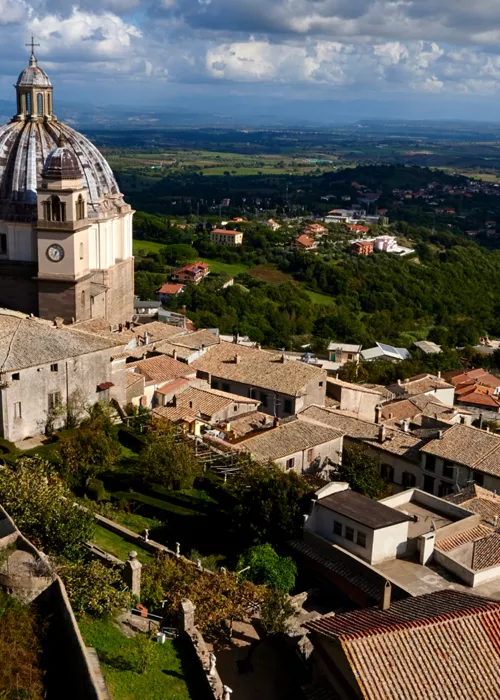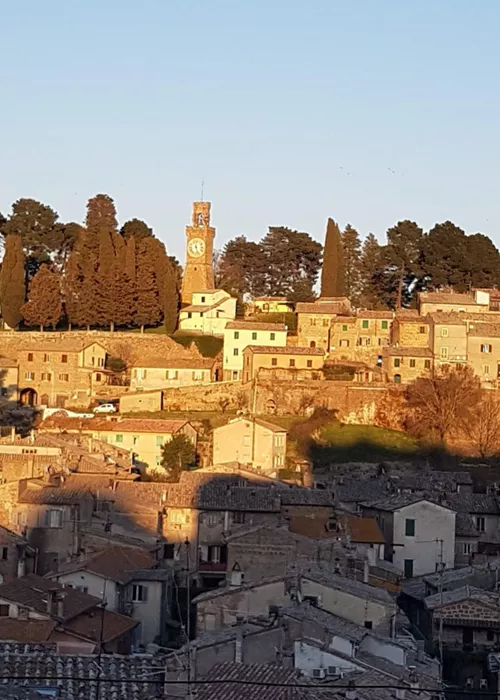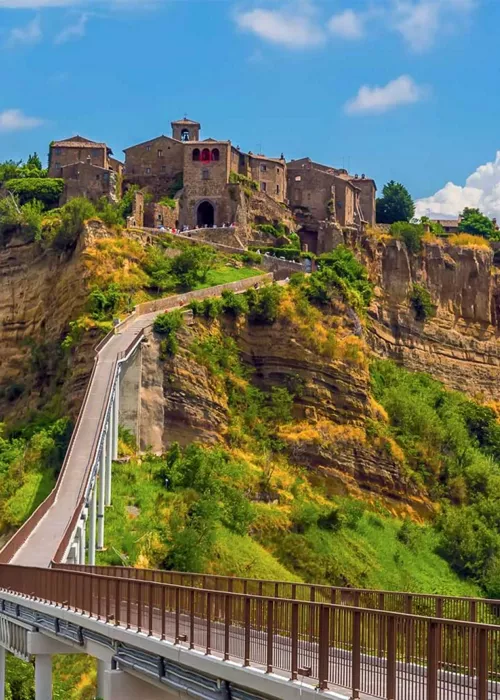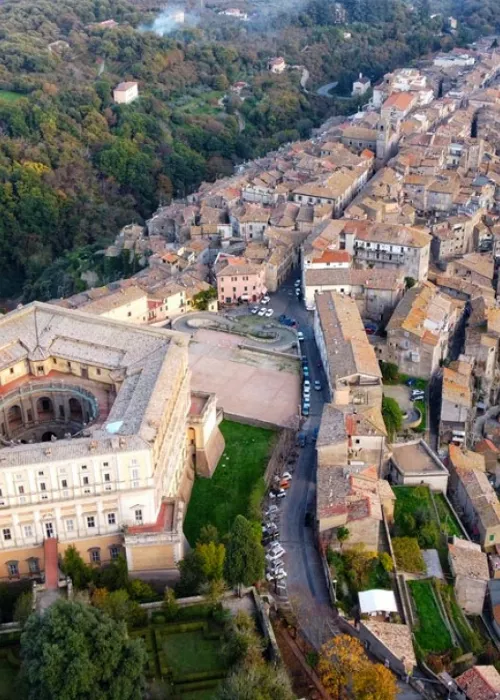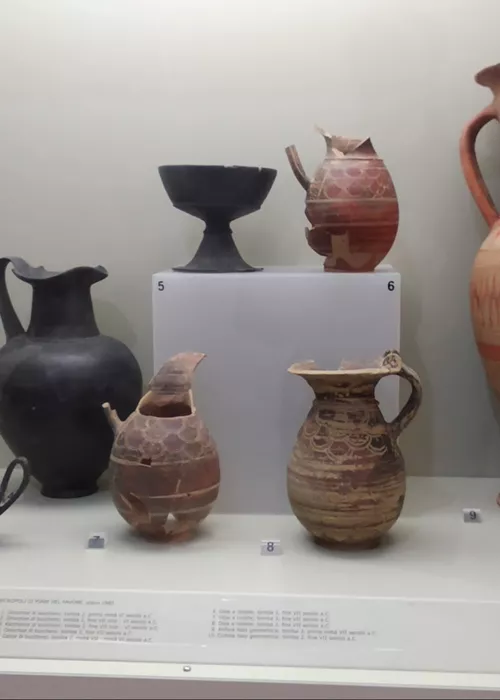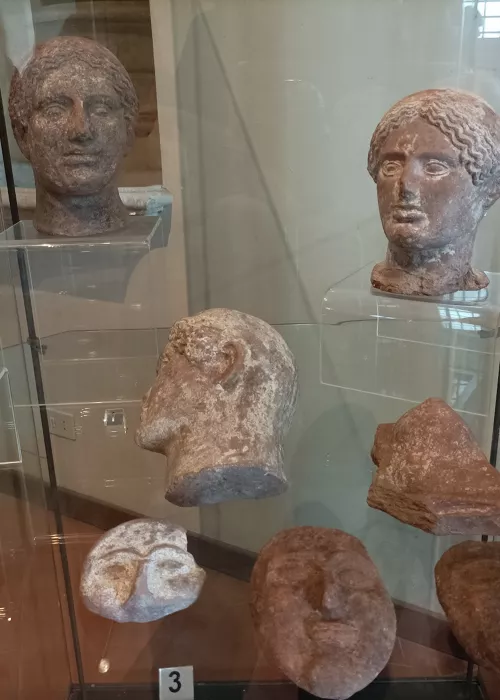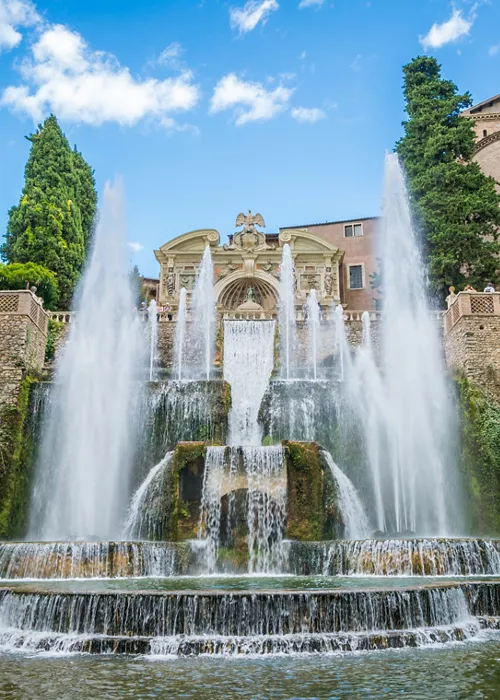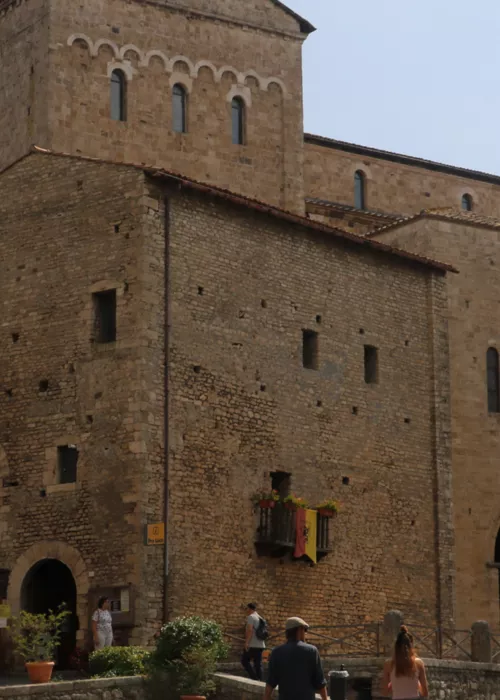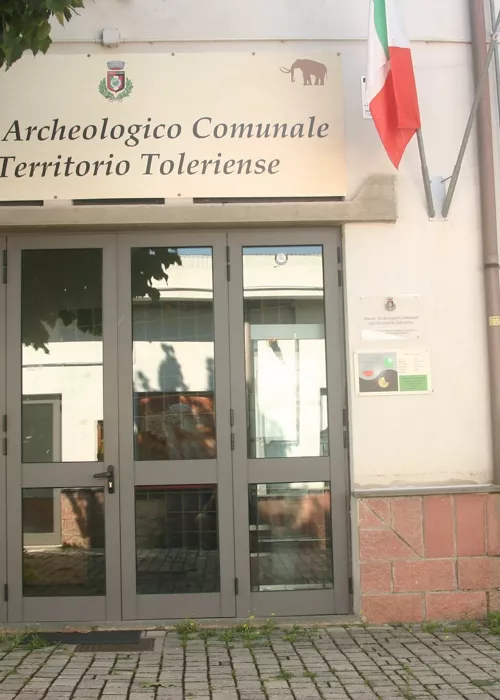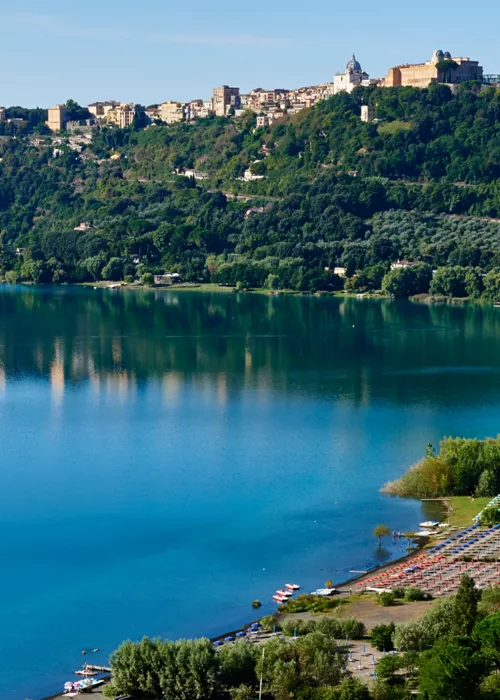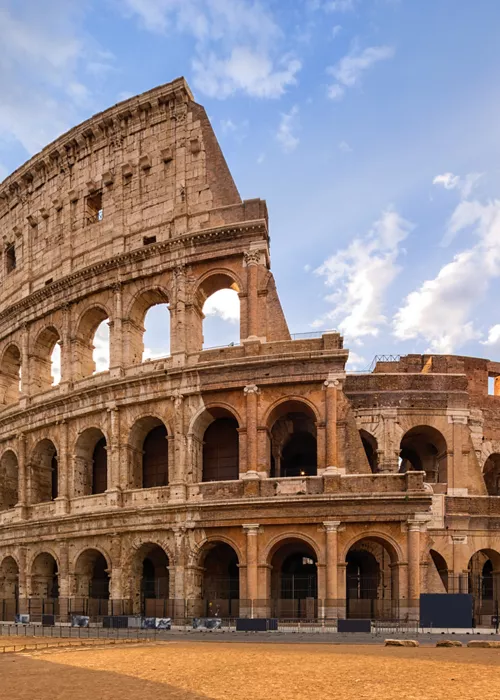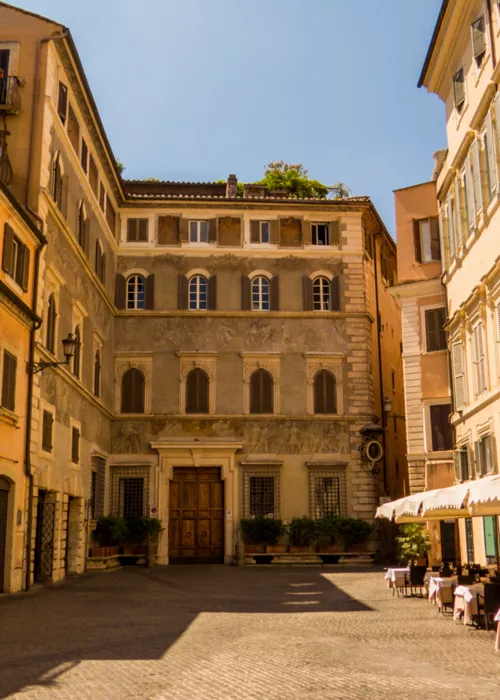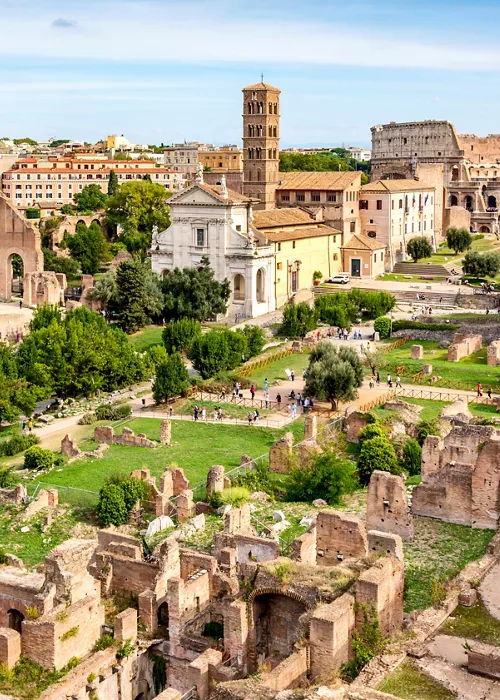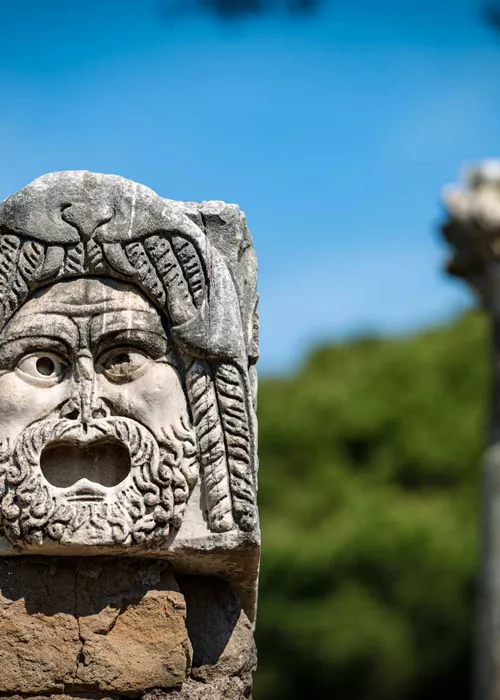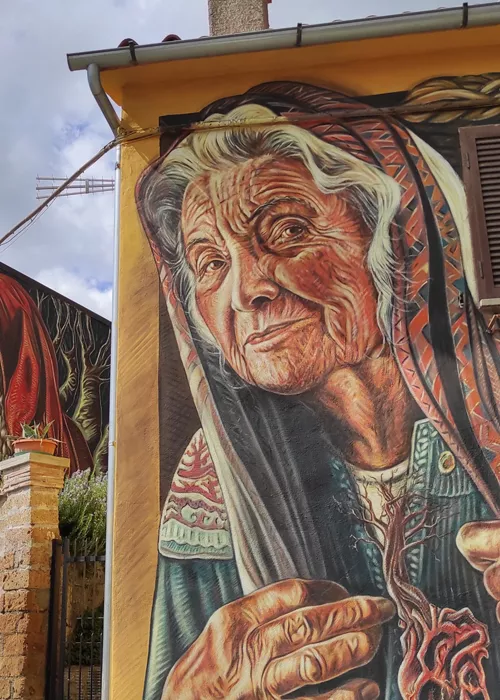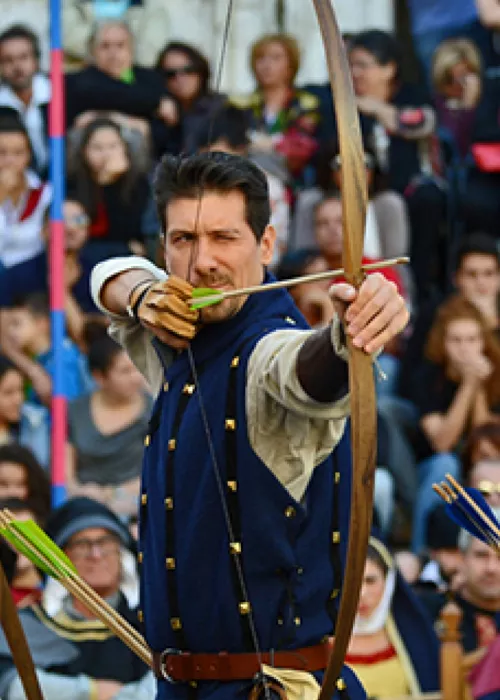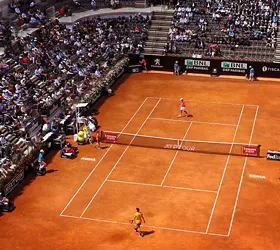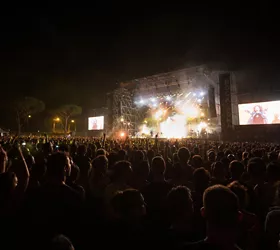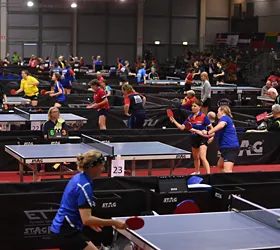Gravel Tour of the Popes
11 minutes
Promoting knowledge of the Lazio territory, of large and small urban centres steeped in history and culture and raising awareness of food and wine delicacies and Lazio hospitality. These are the objectives of the Tour of the Popes, the cycling tourism event, which will cover about 600 km with about 8,000 metres of altitude difference, and will touch the provinces of Rome, Viterbo and Frosinone, stopping in the main cities linked to the Papacy.
The route, structured in a single stage, allows everyone to plan stops according to their level of training. Participants will be able to learn about large and small urban centres rich in history and culture, immerse themselves in the nature of regional parks, UNESCO heritage sites and taste the food and wine delicacies of Lazio, all with a special focus on inclusion and eco-sustainability.
A unique opportunity to explore an undiscovered Lazio, travelling along secondary roads with little traffic, through breathtaking landscapes and enchanting villages.
Bracciano
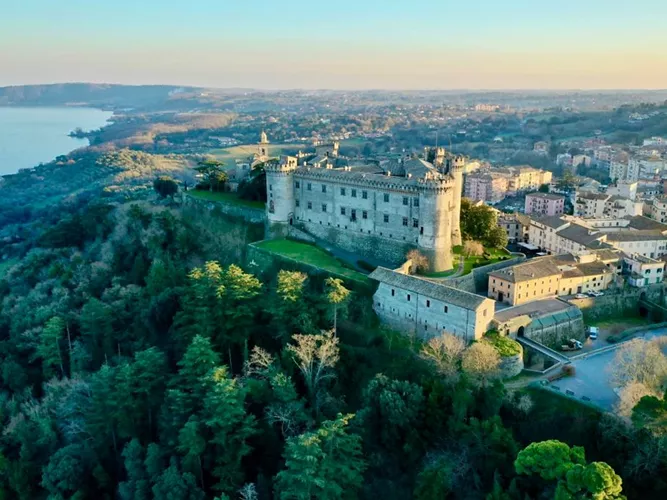
Built on the heights of the Monti Sabatini in the heart of Roman Tuscia, Bracciano rests on the western ridge of the ancient Sabatino volcano, from which its lake originated. Granted as a fief by Pope Martin V to the Orsini family in 1419, the village experienced a new period of prosperity. The castle was rebuilt, destroyed by the Saracen raids, and was embellished with frescoes by Antoniazzo Romano.
At the end of the sixteenth century, Paolo Giordano Orsini, invested with the title of Duke by Pope Pius IV, had an aqueduct built to feed the new economic activities he had established, such as iron and sulphur processing and tapestry processing. Bracciano is a timeless village, immersed in an ancient territory that tells us about the geology of the place and the expertise with which man has been able to tame its forces.
Viterbo
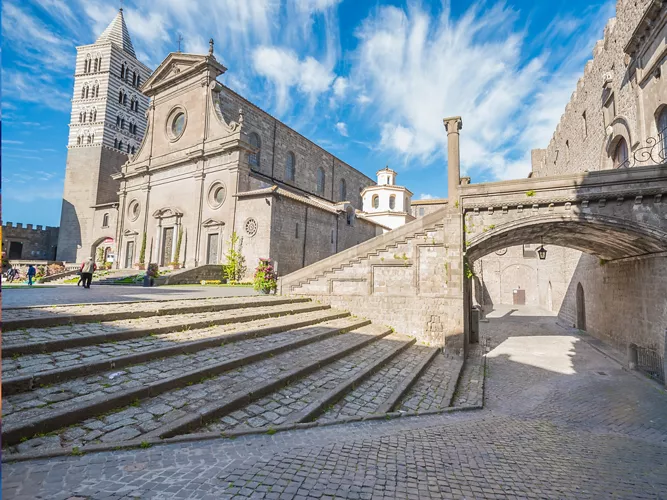
Founded by the Etruscans, Viterbo was a rich and powerful city. Located at 326 m above sea level, it boasts the record of the largest mediaeval old town in Europe.
Between 1200 and 1300 it became the favourite seat of many popes as, controlling almost 50 castles, it offered refuge from the revolts and corruption of Rome. Rightly called the "City of the Popes", it recounts its long and glorious history in architecture and art, as well as through the Museum of the Colle del Duomo and the Civic Museum.
Viterbo is remembered as the city of the conclave: on the death of Clement IV, the cardinals gathered in the city could not agree on the election of a new pontiff until the people of Viterbo decided to press the issue a little and, having barricaded the doors of the Palazzo dei Priori, left the cardinals "clausi cum clave" and fed on bread and water until they agreed to elect Gregory X.
The great local piety is expressed every 3 September with the "Macchina di Santa Rosa", a spectacular procession in which the world-famous monumental processional machine is paraded through the alleyways of the historic centre.
Taking in the streets of the San Pellegrino district, you can fully immerse yourself in mediaeval Viterbo with the traces of its thousand-year history.
An exceptional cuisine, the presence of healthy spas and a territory full of nature and wonderful villages are certainly an invitation to visit this wonderful corner of Lazio.
Montefiascone
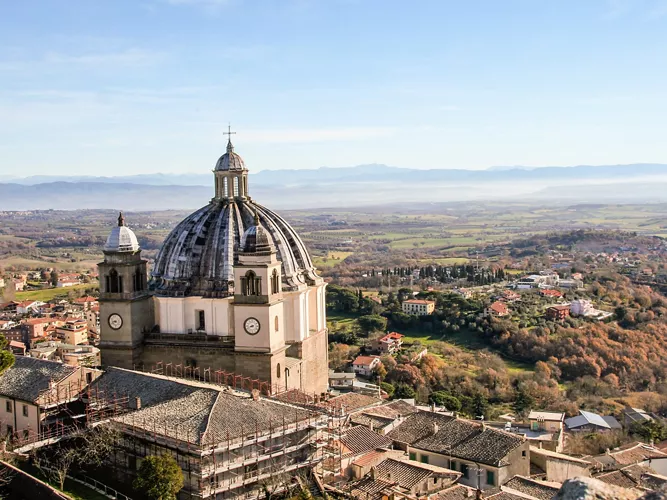
An important town in Alta Tuscia Viterbese at 592 m above sea level, it is located about 5 km east of Lake Bolsena, surrounded by the typical Tuscian landscape.
The highest town in the province of Viterbo, the village is located in the south-eastern part of the Monti Volsini caldera and enjoys a magnificent view over much of Lake Bolsena, earning it the nickname of Belvedere della Tuscia.
The tuff-rich territory has favoured the development of vine cultivation. Legend has it that in 1111, Henry V of Germany was on his way to Rome to be crowned Holy Roman Emperor. In his retinue was the bishop Johannes Defuk, a great wine lover, who had ordered the servant Martino to precede him along the way and identify the taverns with the best wine, indicating them with the inscription "Est" (or "There is", referring to good wine). And so he did.
Acquapendente
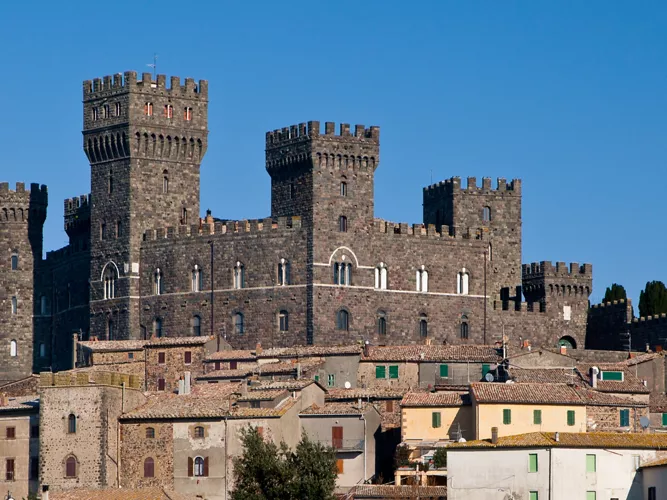
Nestled in the hills of Upper Lazio on the Tuscan border, Acquapendente is located in the province of Viterbo at 420 m a.s.l.
Crossed by the ancient Via Cassia, and known as "The Jerusalem of Europe", the village of Acquapendente owes its name to the presence of numerous waterfalls that flow into the Paglia River.
Immersed in the scenic and natural context of Tuscia Viterbese, the village has an incredible tourist vocation and, although it is modest in size, it is the ideal destination for those who love history, relaxation and spiritual well-being.
Bagnoregio
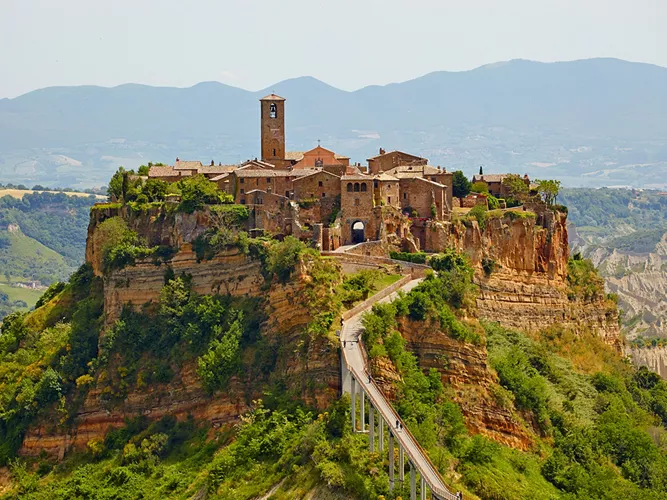
Surrounded by a magical, surreal and fantastic landscape, Civita di Bagnoregio is a village located on the top of a tuff hill and accessible only through a narrow pedestrian bridge from which you can enjoy one of the most spectacular views of all of Lazio.
The constant erosion of the tuff rocks on which it is located has earned Civita the nickname of "the dying city". The origins of the citadel, halfway between Orvieto and Lake Bolsena, date back to Etruscan times and, suspended in time and space, Civita di Bagnoregio is undoubtedly one of Italy's most beautiful and characteristic medieval villages.
Visiting this incredible city on a foggy day is a unique experience, as the town seems to be literally suspended in the void..
Caprarola
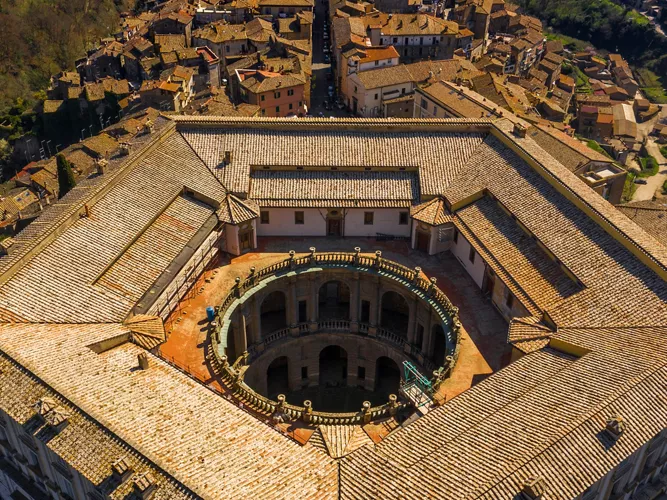
Immersed in the verdant "Tuscia Viterbese" at 493 m above sea level, Caprarola is a bit of a hidden gem in the province of Viterbo. The territory, formerly occupied by the Etruscans, offers one of the most extraordinary natural spectacles of Lazio: from the Cimini mountains, a mountain system of volcanic origin covered with lush and dense forests, to the fascinating Lake Vico, witness of the ancient volcanic activity that characterised and shaped these places. Dominated by the imposing Palazzo Farnese, Caprarola is a unique example of beauty and monumentality. Built in the 16th century at the behest of Cardinal Alessandro Farnese, the palazzo influenced the profound cultural and artistic renaissance. At the gates of Caprarola lies the Lake Vico Nature Reserve surrounded by centuries-old forests of oak and beech trees.
Nepi
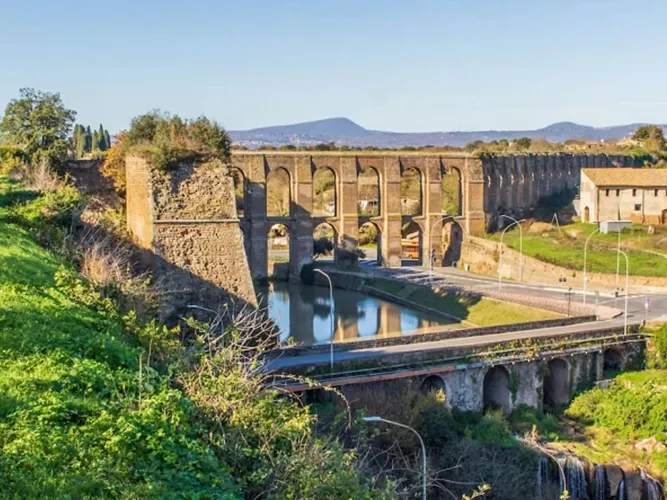
The ancient city of Nepet, the Etruscan name for Nepi, recalls the precious presence of water in the Agro Falisco area squeezed between the Sabatini mountains to the south, the Cimini mountains to the north and the Tiber Valley to the east. The town originated as early as the 8th century BC as an integral part of the Narcense and later Etruscan territory until it became a Roman "municipium". It became a bishopric in the fourth century, and was the subject of numerous lootings during the barbarian invasions. In the 8th century AD, the Duke of Nepi descended on Rome with a strong army and convinced the prelates gathered in the conclave to appoint his brother Pope with the name of Constantine II. Established as a Free Municipality in 1131, Nepi supported the Emperor in the struggles against the Papacy and, after alternating fortunes, it became a feudal possession and was granted over time to the Orsini, the Colonna, the Borgia and the Sforza. In 1499, Pope Alexander VI (Rodrigo Borgia) took Nepi from the Sforzas and gave it to his daughter Lucrezia, who administered it well.
Civita Castellana
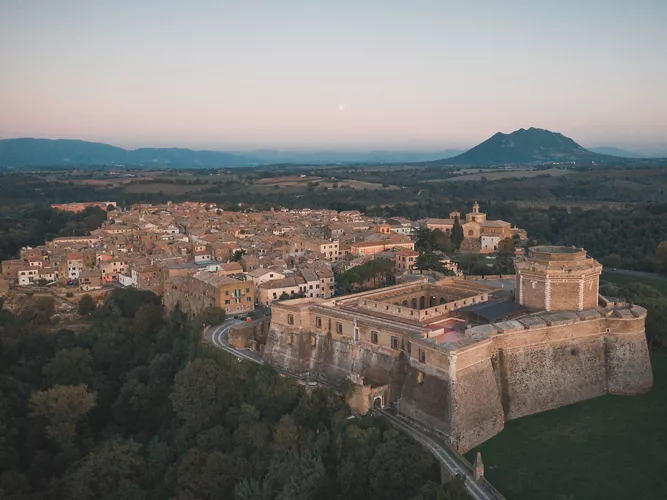
Halfway between Viterbo and the Eternal City, Civita Castellana is a perched village along the Via Flaminia at 145 m above sea level. With a history of over three thousand years, the village, which boasts an interesting archaeological, artistic and cultural heritage, stands out within a landscape characterised by the abundant presence of red tuff, generated by the eruptions of the Vico Volcano.
La Rocca, also known as Forte Sangallo, was built at the behest of the infamous Pope Alexander VI Borgia, in the late 1400s. Once a papal residence and prison, today the fortress is home to the National Archaeological Museum of Agro Falisco, which houses ancient relics, real treasures found in the surrounding area.
Tivoli
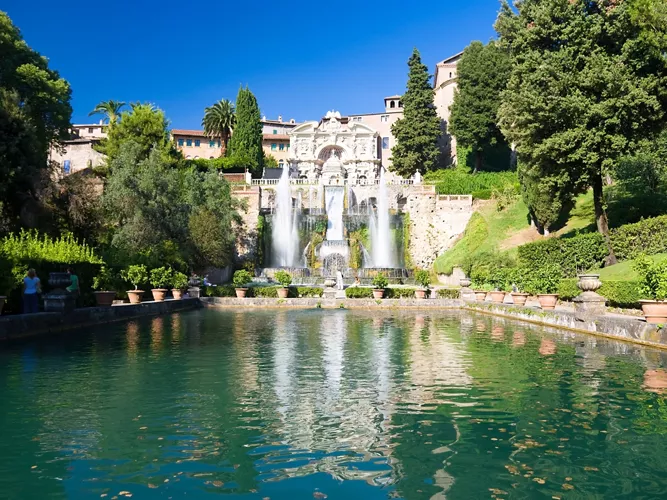
Lying on the last offshoot of the Monti Lucretili mountains at 235 m above sea level, the city of Tivoli enjoys the beautiful natural landscape behind it and the wonderful view of the Roman plain. Characterised by a fairly diverse territory, the town winds its way between the striking mountainous heritage and the course of the Aniene river which here slows down its flow, forming waterfalls.
The strategic position, the presence of the Sanctuary of Hercules Victor, one of the most important in Roman times, and the sulphur water baths have meant that, as early as the Roman Empire, this place was chosen by the Roman aristocracy and the emperors themselves, as a place of residence, as shown by the many villas scattered throughout the territory and, in particular, Hadrian's Villa.
In 1550, Pope Julius II appointed Cardinal Ippolito II d'Este as governor of the city and this would be the beginning of an unparalleled cultural and artistic renaissance for Tivoli. Cardinal Ippolito, one of the most powerful cardinals in Italy, was the unsuccessful pope of the long conclave of 1550, and although he did not attain the papal tiara, he spent his life in Tivoli as a great patron. When he arrived in the city, he refused to stay in the residence of the governors in the wing of the Convent annexed to the Church of Santa Maria Maggiore and called the best artists who were in circulation at that time and in 1560, he began work on the grandiose Villa D'Este that became the summer residence of the Cardinal.
Subiaco
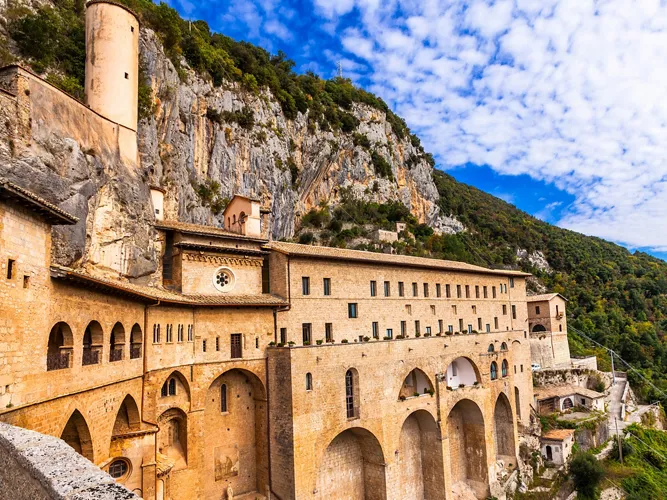
Lying on a rocky hill in the upper Aniene Valley at 408 m above sea level, Subiaco is one of the most important centres in Lazio for the great religious appeal of its monasteries, the beauty of its monuments and the charm of the surrounding nature. The course of the Aniene River flowing at the foot of the town greatly influenced its historical development and fostered early human settlements.
Chosen by Saint Benedict who stayed and founded numerous monasteries here, Subiaco lived through centuries of glory under the guidance, spiritual and temporal, of its commendatory abbot.
The city, culturally enriched by the presence of a library and the monastic scriptorium, holds a record for printing: most likely at the invitation of Cardinal Nicola Cusano, the two clerics Arnold Sweynheym and Conrad Pannartz, already printers in Mainz, reached Subiaco in 1464 and set up the first printing house in Italy there.
In 1773, the spiritual power passed to Giovanni Angelo Braschi, later elected Pope Pius VI, who worked hard for the development of Subiaco, expanded and transformed the paper mill, established the Public Library, restored the Rocca dei Borgia, built the Seminary and made the ancient Sublacense road driveable. The grateful population of Subiaco dedicated the "Triumphal Arch", inaugurated in 1789.
Pius VI called to Subiaco, for the construction site of the Cathedral of Sant'Andrea, the greatest artists who gravitated to the Eternal City at the time, bringing to the Aniene Valley a breath of that Roman Baroque that had translated the Rococo manner from beyond the Alps into a more Italian language.
Anagni
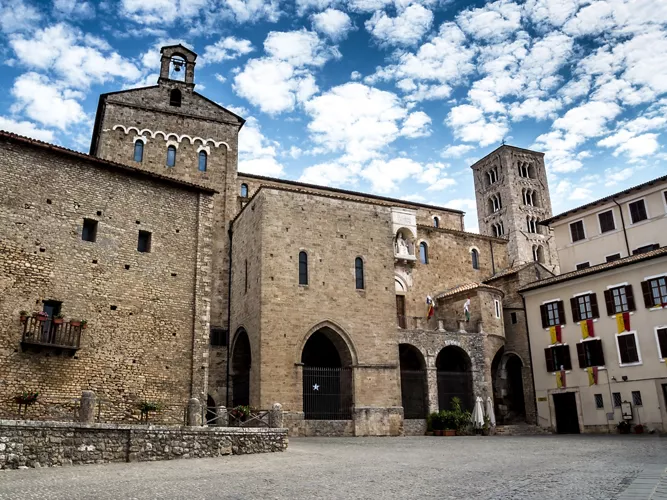
Located at 424 m above sea level, Anagni is a city in Ciociaria known as the "city of the Popes" for being the birthplace of four popes (Innocent III, Alexander IV, Gregory IX and Boniface VIII). In particular, the name of Anagni is linked to the events of Pope Boniface VIII and the episode known as The Anagni Slap. Located on a hill in the middle of the Sacco valley, Anagnia was the ancient capital of the Ernici, counted by legend among the five Lazio cities founded by the god Saturn: the "Saturnian cities" (Anagni, Alatri, Arpino, Atina and Ferentino, the latter also called Antino).
Colleferro
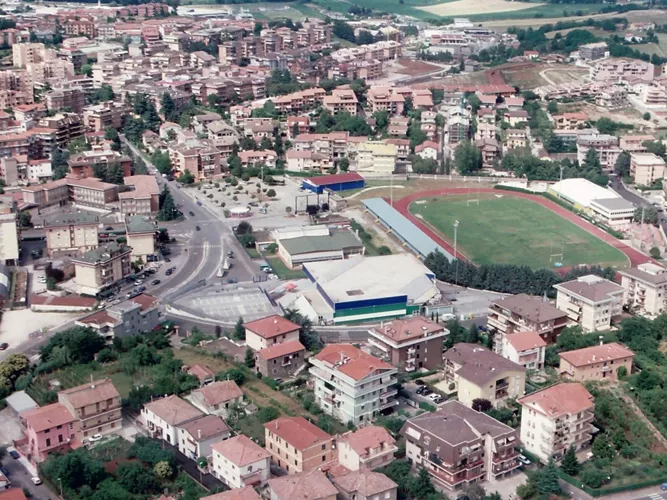
A small town in the province of Rome, Colleferro has ancient origins, dating back to the Bronze and Iron Age. The toponym may, in fact, indicate a place where iron was mined and worked, while the original nucleus is probably to be identified with ancient Verrugo, long disputed between the Romans and the Volsci. In the territory of Colleferro, according to the Latin historians Appian and Plutarch, the decisive battle of the civil war took place: in 82 B.C. the factions led by Gaius Marius and Lucius Cornelius Silla faced each other resulting in the victory of the latter. Entering the Patrimony of St. Peter in the 9th century A.D., the city became the possession of some of Rome's noble families such as the Salviati, the Borghese and finally the Dora Pamphili. During the Second World War, Colleferro suffered enormous damage and was almost completely rebuilt. A few steps from the town, along Via Casilina, the remains of the thirteenth-century walls and the ruins of Castello Piombinara castle erected in the eleventh century are still visible.
Castel Gandolfo
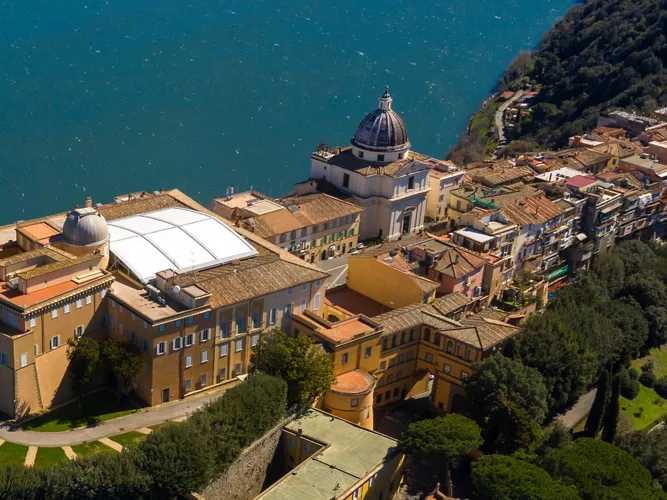
A village in the heart of the Castelli Romani at 426 m above sea level, the beauty of Castel Gandolfo has been certified as one of the most beautiful villages in Italy. A summer papal residence, according to some historians, the site of today's city would coincide with the place where the ancient capital of the Latin League stood, the city of Alba Longa (which tradition has it was founded by Aeneas' son, Ascanius), whose supremacy was eclipsed by the rise of Rome. During the siege of Veio, in 398 BC, the Romans excavated a huge work of hydraulic engineering: a tunnel in the living rock for one and a half kilometres, to regulate the water level of Lake Albano, which is still visible today.
The Pontifical Palace, built by Pope Urban VIII in the 17th century, was opened to the public in 2018 at the behest of Pope Francis.
Rome-Vatican City
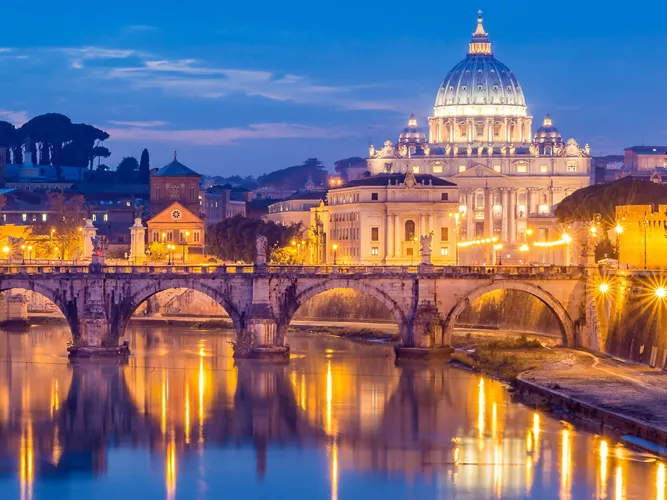
Rivers of ink have been poured to describe every beauty of Rome's "Eternal City". It is therefore up to the cyclist's imagination to trace the history of papal Rome.


